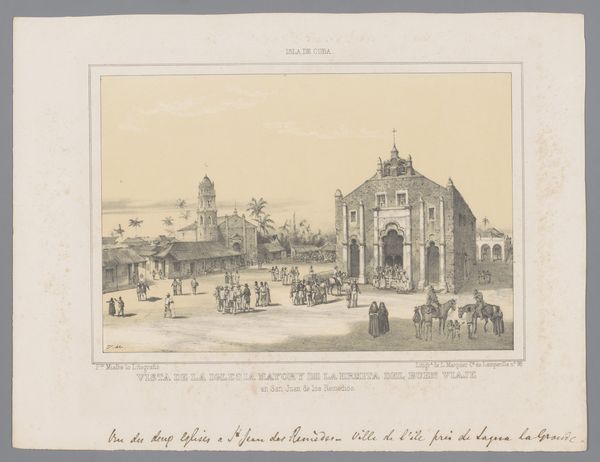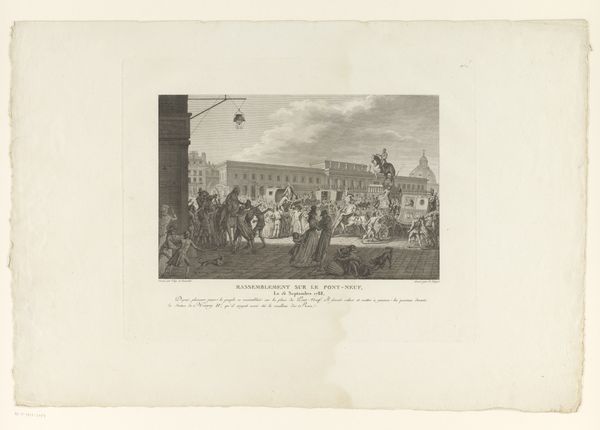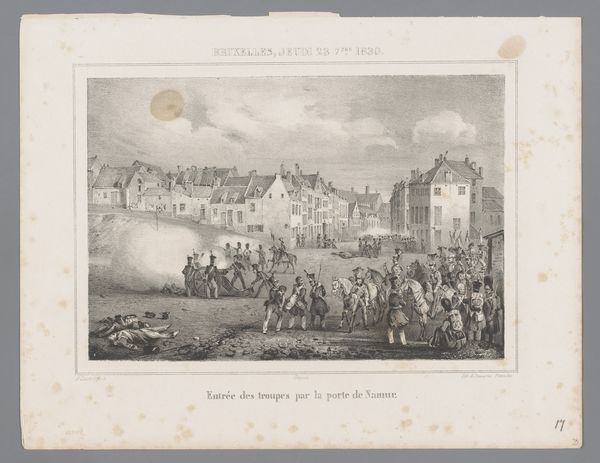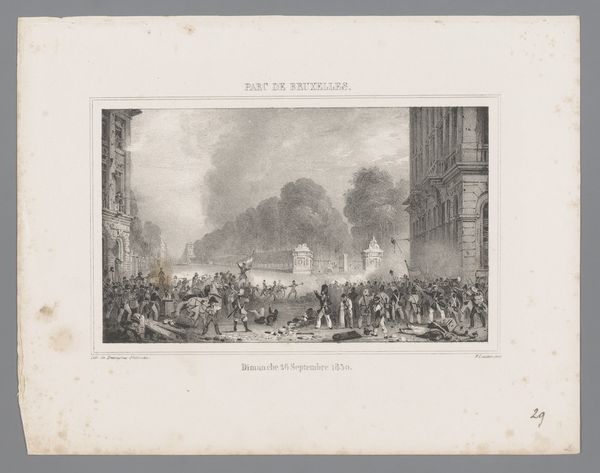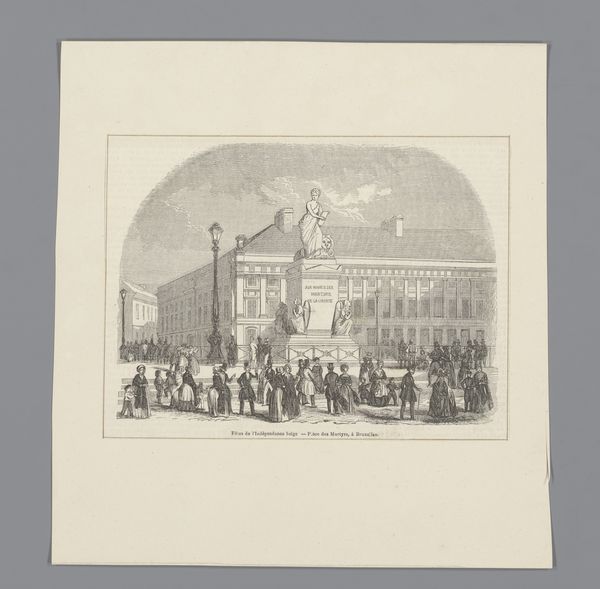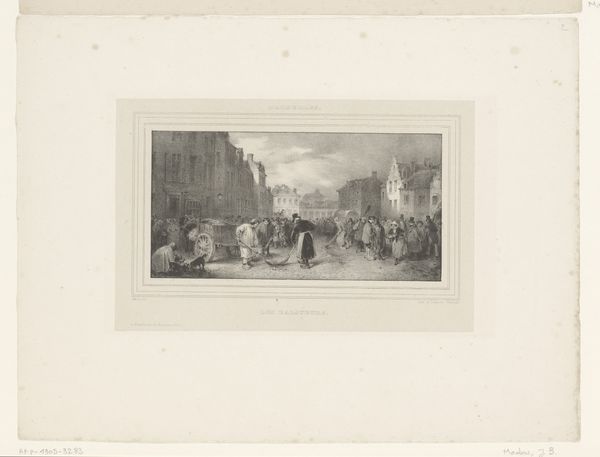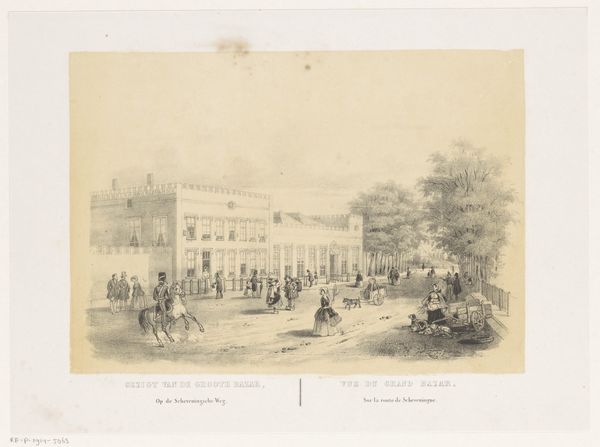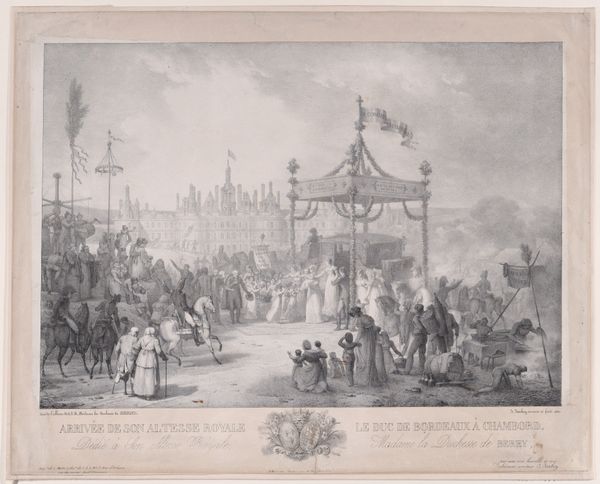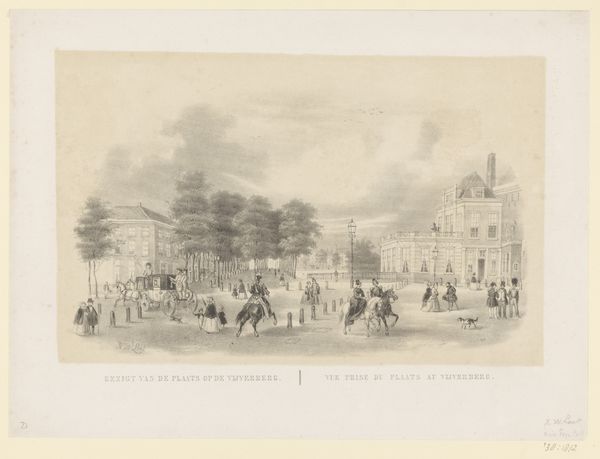
print, etching, engraving
#
narrative-art
# print
#
etching
#
landscape
#
romanticism
#
cityscape
#
history-painting
#
engraving
Dimensions: height 234 mm, width 306 mm
Copyright: Rijks Museum: Open Domain
Paulus Lauters created this print, "Terugtrekken van regeringstroepen," using a technique called lithography. It’s a process that democratized image-making, using the material qualities of limestone and greasy ink to reproduce images in multiples. The appeal of lithography lies in its planographic nature, meaning the image isn't carved or etched but drawn directly onto the stone's surface. Lauters would have drawn on the stone with a grease-based crayon or ink, then treated the stone so that ink adhered only to the drawing. This process allowed for a relative ease and speed of production, making images more accessible to a wider public. Consider how this print medium, in its capacity for replication, aligns with the depiction of a mass event – the withdrawal of troops. Lithography's capacity to disseminate information and imagery is tied to wider social issues of communication, politics, and the consumption of news. It collapses traditional hierarchies of art-making. The inherent qualities of the stone, the artist's hand, and the mechanics of printing all converge to give the artwork its meaning.
Comments
No comments
Be the first to comment and join the conversation on the ultimate creative platform.

